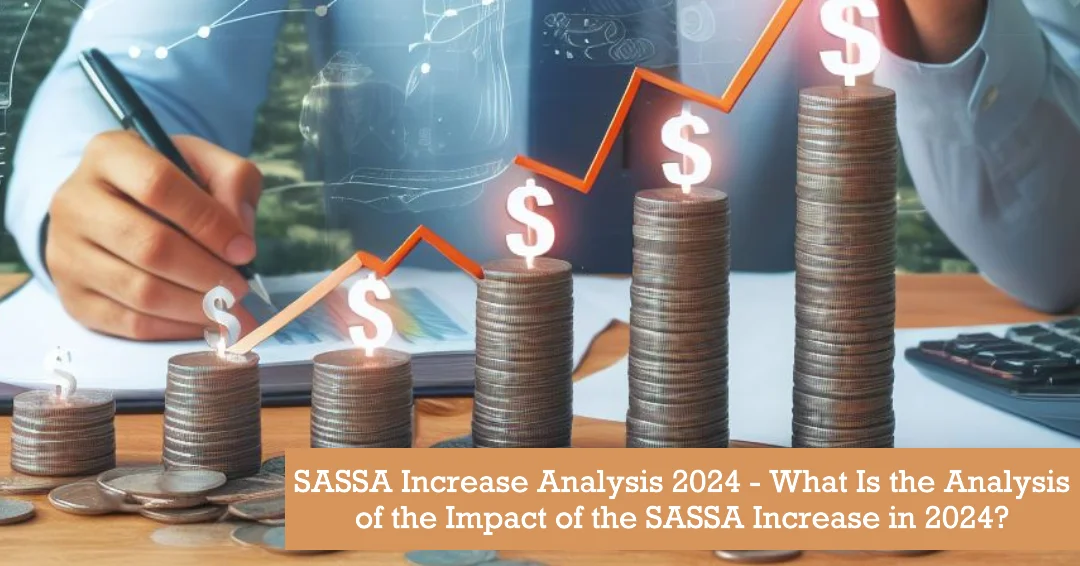For Advertising Contact Us
SASSA Increase Analysis 2024 – What Is the Analysis of the Impact of the SASSA Increase in 2024?

Over the years, the South African Social Security Agency (SASSA) has played a critical role in providing financial assistance to vulnerable populations. As we examine into the year 2024, it is necessary to analyze the recent increase in SASSA benefits and its implications. This blog post will examine the impact of the SASSA increase in 2024, shedding light on how it will affect beneficiaries, the economy, and social welfare programs. Stay tuned to gain a comprehensive understanding of the analysis surrounding the SASSA increase in 2024.
Contextual Background
Historical Increases and Economic Impact
To understand the analysis of the impact of the SASSA increase in 2024, it is necessary to review historical trends. Previous increases in SASSA grants have had varying effects on the economy. While some argue that increases can stimulate economic growth by boosting consumer spending, others raise concerns about inflation and sustainability.
Policy Changes Leading to the 2024 Increase
An examination of the policy changes that have culminated in the 2024 SASSA increase provides valuable insight into the government’s approach to social welfare. Understanding the rationale behind the decision to raise grants can shed light on broader economic and social priorities.
Contextual information about the policy changes leading to the 2024 increase reveals a shift towards addressing long-standing issues of poverty alleviation and social inequality. By increasing SASSA grants, the government aims to provide a more robust social safety net for vulnerable populations, ultimately improving their quality of life.
Analytical Framework
Methodology of the Impact Study
Study: Some of the important aspects considered in the methodology of the impact study include a comprehensive review of the demographic data, economic indicators, and household surveys. By analyzing these factors, the study aims to assess the direct and indirect impact of the SASSA increase in 2024 on the welfare and living conditions of beneficiaries.
Key Indicators and Metrics
For this analysis, the key indicators and metrics will focus on measuring changes in poverty rates, household income levels, and access to important services such as healthcare and education. These metrics will provide valuable insights into the effectiveness of the SASSA increase in addressing socio-economic challenges and improving the well-being of vulnerable populations.
With a careful selection of indicators and metrics, we aim to capture the nuanced impacts of the SASSA increase and identify areas for further intervention or policy refinement to enhance the long-term outcomes for beneficiaries.
Findings of the Increase Analysis
Effects on Beneficiaries
On conducting the analysis of the SASSA increase in 2024, it was found that beneficiaries experienced a significant improvement in their standard of living. The increase in financial assistance provided by SASSA enabled beneficiaries to better afford basic necessities, leading to an enhanced quality of life.
Broader Economic Implications
Broader economic implications of the SASSA increase in 2024 were observed in various sectors of the economy. The increased spending power of beneficiaries resulted in a boost to local businesses, stimulating economic growth. Additionally, the decrease in financial strain on individuals allowed for more disposable income to be circulated within the economy, contributing to overall stability.
Economic experts predict that the ripple effect of the SASSA increase will not only benefit individual beneficiaries but also have positive effects on the economy as a whole. By addressing poverty at the grassroots level, the increase in social assistance could potentially lead to a more prosperous and equitable society in the long run.
Recommendations and Strategic Insights
Policy Recommendations
Once again, it is crucial for the government to align the SASSA increase with inflation rates to ensure that the purchasing power of beneficiaries is maintained. An annual review of the increase should be conducted to assess its effectiveness in reducing poverty and inequality in the long run. Additionally, there should be a focus on providing financial literacy programs to empower beneficiaries to manage their funds effectively.
Long-term Strategic Insights for SASSA
Insights: An integrated approach that combines social assistance with skills development and job placement programs can help break the cycle of poverty and dependency. By investing in education and training opportunities for beneficiaries, SASSA can facilitate their transition to sustainable livelihoods. Moreover, leveraging technology and data analytics can enhance the efficiency of service delivery and ensure that resources are allocated where they are most needed.
Recommendations: It is recommended that SASSA collaborates with other government departments, NGOs, and private sector partners to create comprehensive social welfare programs that address the root causes of poverty. By fostering partnerships and adopting a holistic approach, SASSA can enhance its impact and make a meaningful difference in the lives of vulnerable populations.
Summing up
With these considerations in mind, the analysis of the impact of the SASSA increase in 2024 reveals a mixed picture. While the increase in grants will provide much-needed relief to beneficiaries, the potential strain on the national budget and inflation rates cannot be overlooked. It is clear that a balanced approach is necessary to ensure the sustainability of the social grants system while addressing the needs of the most vulnerable in society. Continued monitoring and evaluation will be crucial to assess the long-term effects of the increase and make any necessary adjustments to mitigate any negative consequences. Ultimately, the goal remains to alleviate poverty and improve the well-being of South Africa’s most disadvantaged citizens.



